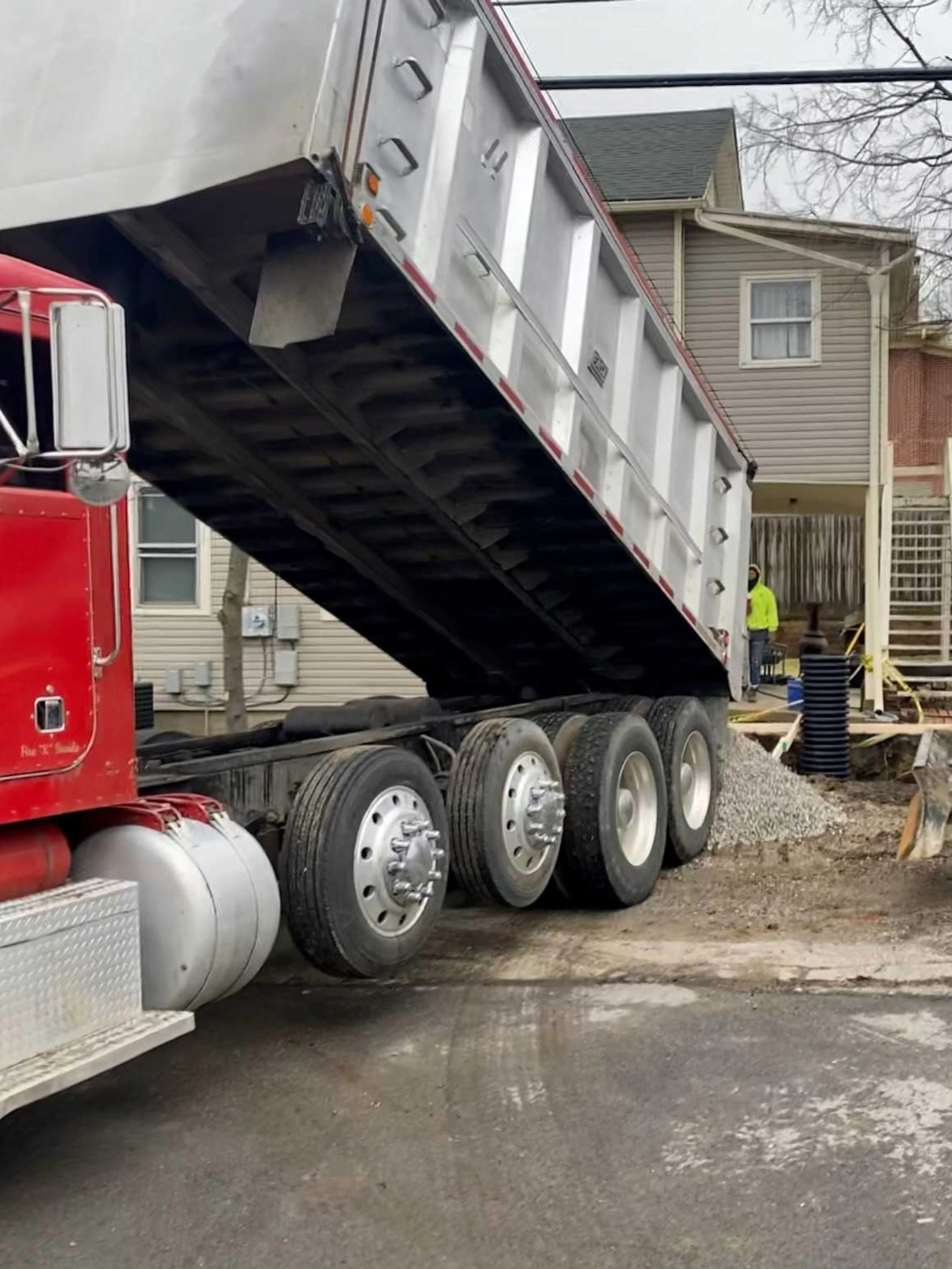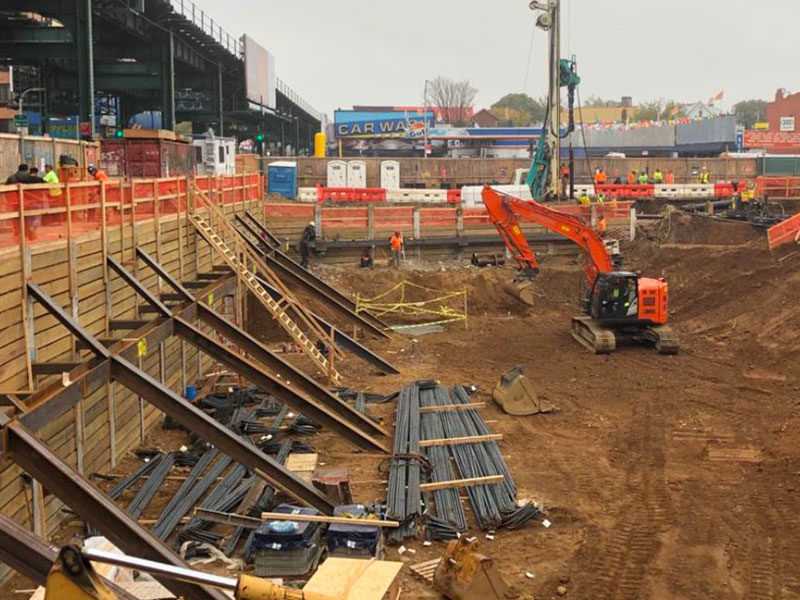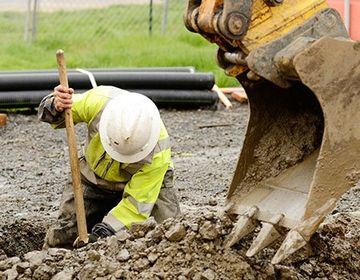Septic Ohio - Comprehensive Septic Tank Solutions in Ohio
Septic Ohio - Comprehensive Septic Tank Solutions in Ohio
Blog Article
In-Depth Expedition: The Scientific Research Behind Superior Excavation Practices
The realm of excavation methods is a domain where science links with workmanship to discover the secrets hidden beneath the planet's surface area. From old hand tools to modern hydraulic excavators, the evolution of excavation strategies has been a testimony to human ingenuity and technological advancements. Nonetheless, what absolutely establishes exceptional excavation practices apart is a deep understanding of geological concepts, paired with the application of innovative tools and methodologies. By exploring the scientific research behind these practices, we can discover the secrets that exist below our feet and value the accuracy and know-how that enter into every dig.
Evolution of Excavation Techniques
Throughout background, the evolution of excavation strategies has played an essential role in progressing building and construction techniques and archaeological explorations. From the basic devices used by our forefathers to the innovative machinery utilized in modern-day times, the progression of excavation approaches has dramatically transformed exactly how we approach different projects.
In old times, manual work with fundamental devices such as wheelbarrows, shovels, and pickaxes was the main approach of excavation. This labor-intensive process restricted the depth and scope of excavations, typically resulting in sluggish progress and limited access to certain websites. Nevertheless, as civilizations advanced, so did the methods and tools utilized for excavation.
The Industrial Change marked a turning point in excavation exercise with the intro of steam-powered equipment. This innovation changed the field, allowing for faster and more comprehensive excavations. In contemporary times, innovation plays an essential function in excavation, with improvements like general practitioner systems, drones, and 3D scanning boosting accuracy and efficiency in the field. The evolution of excavation methods continues to form the method we develop, explore, and understand the globe around us.
Function of Innovation in Excavation

The integration of innovative innovation has actually basically transformed the field of excavation, improving precision and efficiency to extraordinary levels - lancaster excavation. One of the key technological innovations that has significantly affected excavation practices is the use of GPS systems.
In addition, the introduction of 3D modeling and simulation software has streamlined the preparation process for excavation projects. Drivers and engineers can now visualize the whole excavation process before breaking ground, enhancing and determining prospective obstacles operations. Together with this, the application of drones in excavation tasks has promoted aerial surveys, volumetric dimensions, and site evaluations with unequaled speed and precision.
Geological Concepts in Excavation
An understanding of geological concepts is essential for making sure the architectural integrity and security of excavation websites. Geological variables play an important function in identifying the usefulness and safety and security of excavation tasks (dump truck companies in ohio). One essential geological principle to think about is the sort of soil or rock existing at the site. Different dirt kinds, such as crushed rock, sand, or clay, have varying levels of stability and require various excavation methods. For example, cohesive soils like clay may need additional support to stop collapses, while sandy dirts might be vulnerable to disintegration throughout excavation.
Additionally, the geological framework of the area, including mistakes, cracks, and rock formations, have to be very carefully analyzed to determine possible dangers and obstacles. Digging deep into near geological fault or unstable rock formations can result in instability and prospective dangers. By carrying out comprehensive geological surveys and evaluation, engineers and excavators can develop approaches to reduce threats and guarantee the effective completion of excavation projects. Inevitably, incorporating geological concepts right into excavation practices is critical for attaining secure, efficient, and lasting results.

Latest Tools for Excavation
In the realm of excavation practices, contemporary developments in devices have changed the performance and precision of excavation procedures. Among the most recent tools making waves in the market is making use of drones geared up with advanced imaging technology. These drones can give thorough airborne surveys of excavation sites, supplying real-time information on topography and possible threats. This info aids in far better planning and decision-making during the excavation procedure.
An additional cutting-edge tool acquiring popularity is the implementation of 3D printing technology for producing custom-made excavation equipment. This permits for the production of specialized devices that are customized to the specific needs of a job, enhancing effectiveness and minimizing downtime.
Additionally, advancements in products scientific research have brought about the advancement of more powerful and more long lasting excavation tools. septic ohio. Tungsten carbide-tipped excavator accessories, for instance, offer remarkable efficiency in difficult ground conditions, boosting performance on-site
Scientific research's Influence on Excavation Practices

In addition, innovations in products scientific research have actually caused the development of stronger, more sturdy excavation click here for more info tools and equipment. For example, using composite materials in shovels and diggers has boosted their performance and longevity, inevitably boosting productivity on excavation sites. Furthermore, clinical study on soil technicians and geotechnical engineering has actually supplied valuable insights right into dirt behavior, permitting excavation experts to make enlightened decisions pertaining to excavation approaches and soil stablizing techniques. On the whole, science remains to drive advancement and renovation in excavation practices, making excavation jobs extra efficient, economical, and sustainable.

Final Thought
In conclusion, the evolution of excavation techniques has been significantly influenced by developments in modern technology and a deeper understanding of geological concepts. The most recent tools and devices used in excavation have actually boosted performance and accuracy in the area. The application of clinical knowledge has significantly improved excavation techniques, resulting in a lot more reliable and lasting methods for digging deep into different kinds of materials.
In the world of excavation practices, contemporary innovations in tools have actually reinvented the efficiency and accuracy of excavation procedures. By leveraging scientific concepts, the excavation sector has actually been able to dramatically boost performance, accuracy, and safety and security in excavation procedures. GPR allows excavation teams to non-invasively check and map subsurface frameworks, utilities, and prospective risks, enabling them to plan excavation jobs with greater accuracy and reduced risk of crashes.
Additionally, clinical research on soil technicians and geotechnical design has actually supplied beneficial understandings right into dirt behavior, permitting excavation specialists to make informed choices relating to excavation methods click now and dirt stablizing techniques. Overall, scientific research continues to drive development and enhancement in excavation practices, making excavation projects a lot more efficient, cost-effective, and lasting.
Report this page